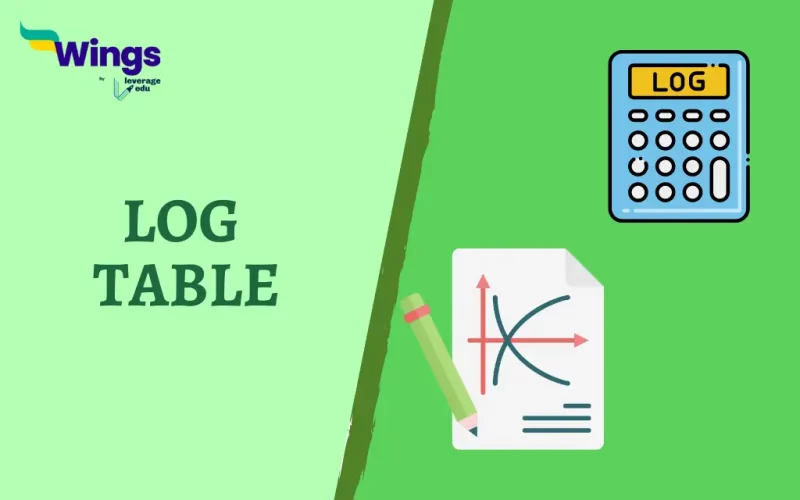A Log Table is also known as a Logarithmic Table. It is a reference tool used to simplify complicated calculations involving logarithmic functions. Furthermore, it lists pre-computed logarithm values for different integers, usually in a base such as 10 or the natural logarithm base (approximately 2.71828). Additionally, this Log Table allows you to quickly look up the logarithm of a given number without having to perform the calculation manually. Therefore this was particularly important before the advent of calculators and computers. Read on to learn more about Log Table, its invention, rules, Log Table from 1 to 100 and more.
Also Read: 10+ Logarithm Questions and Answers
Who Invented the Log Table?
The invention of the Log Table is attributed to the mathematician and astronomer Henry Briggs, who also worked closely with Sir Isaac Newton.
- Briggs developed the concept of logarithms and made the first logarithmic tables in the early 17th century.
- In addition, these Tables were used much in scientific and technical fields.
- Moreover, used particularly in navigation, engineering, and physics, where calculations involving large numbers were common.
Also Read: Algebraic Identities: Examples and Chart
Log Table Rules
Furthermore, the Rules for using the Table are:
- The Table is organised by the logarithm base, with each entry corresponding to the logarithm of a specific integer.
- To find the logarithm of a number using a Log Table, you need to identify the base of the table and locate the entry closest to the number you want to find the logarithm.
- The difference between the logarithm of the number and the looked-up value is the mantissa, while the whole number part of the logarithm is the characteristic.
Also Read: Algebra Questions
How to use Log Table with Example
To use a Log Table with an example, follow these steps:
- Understand the Concept: Each Log Table is specific to a certain base, commonly base 10.
- Logarithms are used to simplify calculations involving exponentiation and multiplication.
- Identify Parts of the Number: Split the given number into two parts – the big part (Characteristic) and the small part (Mantissa).
- For example, for log10(15.27), the big part is 15 and the small part is 0.27.
- Use the Log Table: Thereafter, find the row number corresponding to the big part (15) and the column number for the small part (0.27) in the Log Table.
- The number where the row and column intersect is your value (let’s say it’s 1818).
- Mean Difference: Look at the “Mean Difference” column corresponding to the row number (15) and write down the value (let us say it’s 20).
- Combine Values: Add the values you got from steps 3 and 4 (1818 + 20 = 1838).
- This new number (1838) is your Mantissa part.
- Find the Characteristic: Determine the big part (Characteristic) based on where your original number lies. For example, if it’s between 10 and 100, the characteristic should be 1.
- Combine Parts: Finally, put a decimal point between the characteristic and mantissa parts. In our example, it becomes 1.1838.
Also Read: Understanding Set Theory Formulas & Questions
Log Table from 1 to 100
Furthermore, here is the Log Table from 1 to 100:
How to use Log Table for Multiplication?
Moreover, to use a Log Table for Multiplication, you need to follow these steps:
- Write the multiplication problem you want to solve, for example, 4 × 5.
- Find the logarithms of both numbers in the problem. For example, the logarithms of 4 and 5 are 0.6021 and 0.6989, respectively.
- Add the logarithms of the two numbers. For the example, the sum of the logarithms is 1.3009.
- Convert the result back to the original base by subtracting the logarithm of the base from the sum. For example, subtracting the logarithm of 10 (0.3010) from the sum gives 1.0000.
- Take the antilogarithm of the result to find the product. For example, the antilogarithm of 1.0000 is 10, which is the product of 4 and 5.
Related Blogs
I hope this helps! Did you like learning about the Log Table? Keep reading our blogs to learn more about the Basic Concepts of Maths!
 One app for all your study abroad needs
One app for all your study abroad needs













